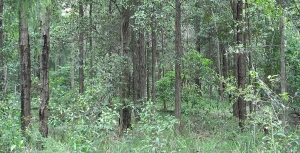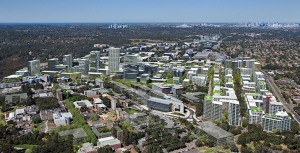Displaying items by tag: STIF
Sydney Turpentine-Ironbark Forest Declared Critically Endangered
The NSW Threatened Species Scientific Committee, established under the Biodiversity Conservation Act 2016, has made a Final Determination to list Sydney Turpentine-Ironbark Forest (STIF) in the Sydney Basin Bioregion as a critically endangered ecological community. This classification already applies under the federal Environment Protection and Biodiversity Conservation Act.
The highest threat category is now applied because STIF has experienced large:
- reductions in geographic distribution
- degrees of environmental degradation
- disruptions of biotic processes and interactions
There is an estimated 2,940 ha of STIF remaining, or less than 10% of the estimated original distribution.
Remnants of STIF are poorly represented in the formal reserve network, and unreserved areas are subject to the threat of vegetation clearing. The total area under reservation is estimated to be 570 ha, equivalent to less than 2% of the estimated pre-1750 distribution or 20% of the remaining extent.
Remnants of STIF have historically been subjected to a range of anthropogenic disturbances including logging, grazing by domesticated livestock and burning at varying intensities.
Remnants are typically small and fragmented and are susceptible to continuing attrition through clearing for routine land management practices due to the majority of remnants being located in close proximity to rural land or urban interfaces.
Applications to the NSW Land and Environment Court demonstrate that there is ongoing pressure to clear STIF in the course of developing private properties or for the establishment of asset protection zones.
STIF is subject to ongoing invasion by an extensive range of naturalised plant species. Weed invasion is exacerbated by the proximity of remnants to areas of rural and urban development and the associated influx of both weed propagules from gardens and nutrients contained in stormwater runoff, dumped garden waste and animal droppings.
Ivanhoe Development: Will there be Genuine Offsets for the Loss of STIF Vegetation?
The amount of development along Epping Road is astronomical. Sure, this development is near the Chatswood to Epping train line and bus services. What happens to people wanting to go north or south? They will add the existing logjam on Lane Cove and Ryde Roads.
More Sydney Turpentine Ironbark Forest (STIF) will be lost How can it be possible to find an offset for the same ecological community?
Ivanhoe Estate which is located on Epping Road between Herring Road and Shrimptons Creek at Macquarie Park is up for mixed tenure high density re-development. At the moment there are 259 social housing dwellings in the locality comprising a mix of townhouse and four storey apartment buildings set around a cul-de-sac street layout amongst mature trees.
It has been that way for 25 or more years but the new proposal provides for 3,500 dwellings (with only 128 allocated to affordable rental housing), basement car parking, a private high school, child care centres, community and retail uses and maximum building heights ranging from 45 to 75 m (20 storeys). This is very clearly an overdevelopment of the site.
Of particular concern is the proposal to remove more than 800 trees from the site including remnant STIF. STIF is classified as an endangered ecological community under NSW and Commonwealth legislation. Currently only 0.5% of the original STIF community remains and every effort must be made to protect and maintain existing remnants intact.
The reason given for this removal is the footprint for the proposed basement parking and an access roadway which means that most of the site will be excavated.
The master plan for the site treats the loss of the STIF as unavoidable and proposes biodiversity offsets in accordance with the NSW Biodiversity Offsets Policy for Major Projects. These offsets are not acceptable because they do nothing to add to the total of remaining STIF. They rely on another remnant of STIF being identified that is not currently protected by zoning or legal agreement and making that site subject to such protections.
Despite the master plan relying on offsets for the loss of STIF, the Biodiversity Offset Strategy provides no information about the location of an offset site or time lines for implementing any offsets. The destruction of this important vegetation can be avoided by changing the master plan. This should be the first priority and must be done. There is ample opportunity to scale back the development and protect the STIF while providing an increase in the number of dwellings available in this increasingly developed area.
With Sydney’s population forecast to reach eight million people there will inevitably be many more similar conflicts between development and biodiversity across our city.
This information has been taken from the Ryde Hunters Hill Flora and Fauna Preservation Society newsletter, Wallumetta (August edition).


